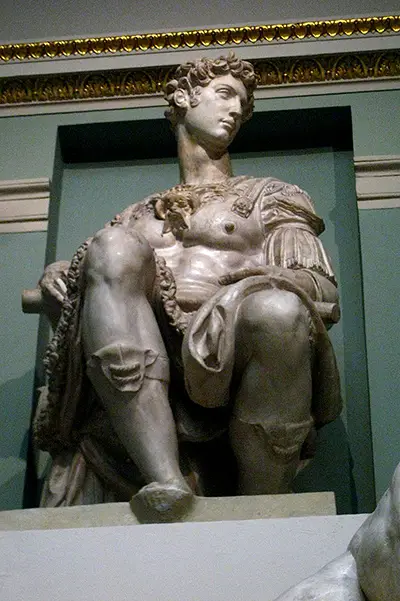Michelangelo received a good number of requests for his work within this chapel, leaving behind a number of different sculptures that were then later installed as part of the final display. The piece itself is 1.68m tall and helps to strengthen the legacy of the Medici family who were a key part of Italian history during this period. The wealthy elements of society would want to leave behind something that would allow others to remember them for years to come and sculpture and painting was the most popular method for that. It would then become a competition to obtain the services of the most respected craftsmen in the country, and once the likes of Michelangelo had worked with the Medicis, then they would also be sought after by most other patrons. Michelangelo was also highly skilled in negotiating over these projects, always looking for ways that he could attract bigger and better commissions which could further raise his profile.
Major patrons would often request that they be included within the projects that they commissioned, or instead perhaps a friend or member of their family. In some cases we find Renaissance paintings with portraits of the patrons in corners of the artwork, whilst the main theme would dominate centrally. This had the additional benefit of linking the patrons to perhaps a religious theme, almost suggesting to the viewer that they were god-like or divine themselves. In the case of Michelangelo, it would be sculpture which brought in the most work and many patrons, including the Medici family would want to be portrayed in an idealised form, where reality is only used approximately so that the way in which future generations viewed the subject could be adapted and shaped. See also the Lorenzo de' Medici which is housed in the same location.
The Medici family themselves were heavily involved in the arts and were happy to invest large amounts of their wealth in the pursuit of the finest art. They were fortunate to be around during a time when Italian art was just so wonderfully served, with architects, sculptors and painters who would rival anyone who has appeared since anywhere in Europe. They were also knowledgeable and promoted a number of artists who showed promise from a young age but needed assistance as they sought to develop their careers. Most major artists would have no choice to work with such patrons, as opportunities for work were limited during this era.


